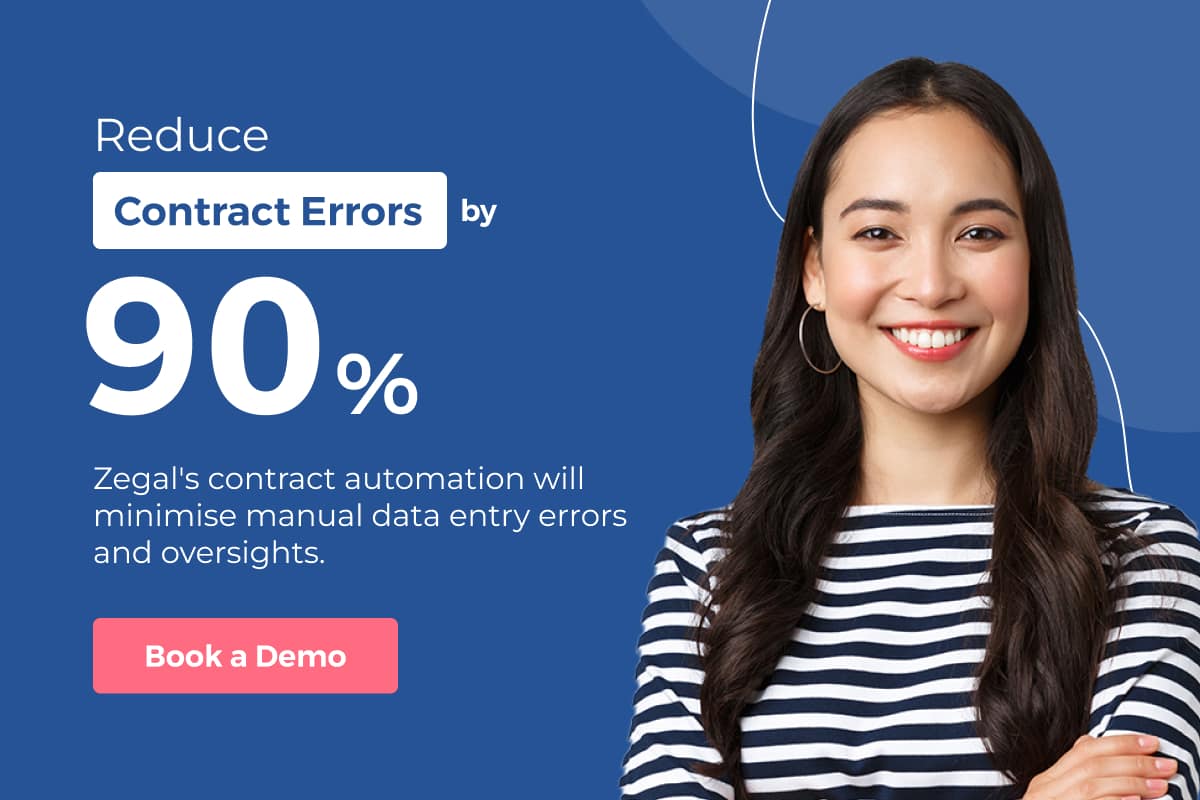Table of Contents
For countless centuries, humanity has relentlessly pursued innovations to enhance efficiency.
In times gone by, document creation and storage were confined to physical copies; however, with the advent of computers, we witnessed the emergence of electronic documents.
Despite this evolution, the challenge of managing accurate documents persists. Numerous records are riddled with errors, categorisation is time-consuming, and the issue of working in silos is ever-present.
The remedy lies in document and contract automation for small businesses, which addresses time, errors, and efficiency issues.
By harnessing AI and machine learning, organisations can generate new documents from existing data, marking the future of contract management and automating data entry fluently.
Adapting to this change is imperative.
How has data evolved over the years?
Data has been integral throughout human history. Its earliest usage is traced back to 19,000 BC, with people from 4,000 BC onwards recording data on various mediums like stones, trees, and clay tablets.
By 400 BC, scrolls were introduced to accommodate larger data volumes. The 1600s saw the age of health statistics, recording data on various demographic and health factors.
Data processing began in earnest in the 1880s with the invention of the tabulation machine. Fast forward to the late 1920s and early 1930s, the Germans pioneered the use of magnetic tape for electronic data storage, subsequently creating floppy disks and hard disks.
Presently, we are in the digital era, witnessing an explosive growth in data owing to the rise of the internet.
Data storage and management have evolved from mere kilobytes to handling gigabytes and terabytes. Businesses of all sizes, including startups, SMEs, enterprises, and e-commerce platforms, manage vast data sets.
Individuals now access data online for various purposes, including professional services like Resumes Planet, to bolster job prospects.
This era of ‘big data’ presents opportunities and challenges for organisations.
What is document automation?
Document automation, often called document assembly, is the design of systems and workflows that assist in creating electronic documents.
These processes rely on data input, predefined templates, and rules to dynamically create documents ready for use, saving time and reducing the potential for human error.
In its essence, document automation involves using digital technology to streamline and automate the document creation process. It replaces the traditional manual drafting of documents with intelligent templates that can generate customised and intricate documents based on the specific information inputted into the system.
While data is abundant, and precision is necessary, document automation is a cornerstone in operational efficiency, especially in legal realms where companies like Zegal operate.
The challenges solved by business document automation
Organisations generate many documents daily, ranging from business plans and employment contracts to financial reports and legal agreements.
The requirement for various documents is particularly acute for new businesses seeking funding, necessitating strategic plans, financial forecasts, registration certificates, and other legal documents.
Ensuring these documents are stored safely and error-free is a daunting task. Key challenges include:
Time: Categorising and inputting data is a time-consuming process requiring significant human resources.
Errors: Human errors, while inevitable, can have substantial repercussions.
Missing documents: Documents can easily be misplaced, and locating them can be time-intensive.
Security: Safeguarding documents is a pressing concern for modern organisations.
Document versions: Multiple document versions and formats, especially outdated ones, complicate document management.
Accessibility: The sheer volume of documents impedes prompt retrieval, potentially hampering business efficiency and productivity.
The role of document automation for SMBs
Document automation entails converting documents into AI-enabled templates, ensuring constant accuracy.
This process requires artificial intelligence and machine learning to enable your system to identify distinct document categories. Documents are then aggregated from various sources and stored in appropriate templates, which could range from simple formats to more complex ones featuring graphs, tables, images, and diverse data types. Enhance your business documents with a professional touch by incorporating headshots where appropriate.
Automation helps prevent the signing of imbalanced contract terms and safeguards all parties involved. The advantages are manifold:
Reduces errors: Automation minimises the potential for costly document errors.
Boosts productivity: By diminishing the time required for filing, creating, and storing documents, automation enhances overall productivity.
Ensures standardisation: Enforcing uniformity across business processes provides efficiency, credibility, and accuracy.
Saves time and money: By cutting down manual tasks, automation leads to significant time and cost savings.
How can small businesses adopt document automation?
Implementing document automation necessitates the acquisition of appropriate software. For newcomers, considering a startup advisor might be prudent to navigate complex document management.
Identify the types of documents for automation, which could span various departments such as media, logistics, finance, HR, customer service, supply chain, sales, and marketing.
Focus on documents or data sets that are voluminous or require repetitive input. After downloading and setting up the software, categorise your documents and engage relevant departments and stakeholders.
Prepare your team for the transition, both logistically and mentally. Establish and approve the budget before implementation, including data consolidation, cleansing, and automation.
Integration with necessary tools, multiple rounds of testing, and eventual deployment follow. It’s crucial to provide adequate training to employees to familiarise them with the new document management system.

Use automation software to get ahead
In modern business, staying ahead requires embracing innovation and streamlining processes.
This is where Zegal becomes an indispensable ally for organisations. As a platform that understands the challenges of document management, Zegal doesn’t just offer solutions—it builds bridges to the future of business operations.
With document automation as its linchpin, Zegal ensures that businesses, especially small enterprises that seek agility and minimal error margins, can maintain accuracy in document management, save invaluable time, and uphold the highest efficiency standards.
Hailey Cheung
Hailey Cheung is a PCLL candidate at City University of Hong Kong with a Bachelor of Laws (LLB) from the University of Bristol. She has extensive legal experience, including roles as a Dispute Resolution Paralegal at Harneys, Student Advisor at the University of Bristol Law Clinic, and internships at Mayer Brown, Stephenson Harwood, and Zegal. A recipient of the Dean’s List International Scholar Award, Hailey also holds a Business Foundations Specialization from Wharton Online. She is passionate about legal advocacy and international trade.






